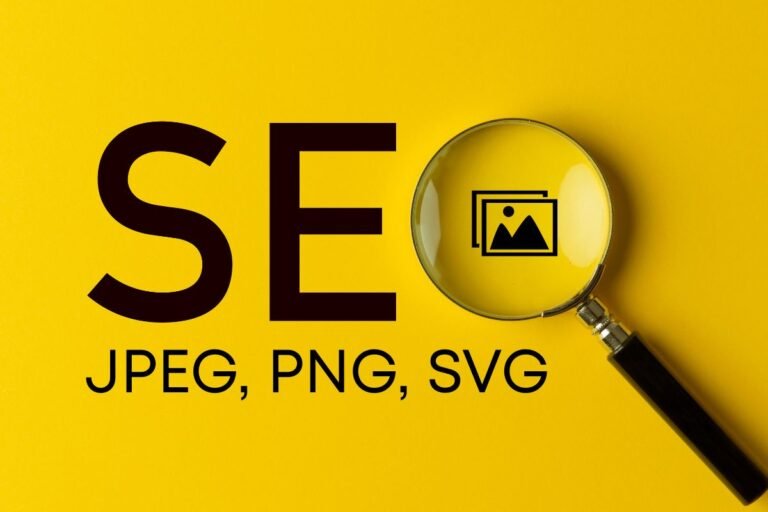
Redesigning your WordPress website can unlock faster performance, better conversions, and a sharper brand presence, but it can also introduce SEO risk, blow up budgets, and slow your momentum if you pull the trigger at the wrong time. The key is knowing when a full WordPress website redesign is the right move, and when a strategic refresh or optimization sprint will deliver more value with less disruption. In this guide, you’ll learn the signals to watch, how to align timing with business milestones, and a practical, modern WordPress process to de‑risk the project and ship a site you’re proud of.
Signs Your WordPress Site Needs A Redesign
Performance And Core Web Vitals Slippage
If your site feels slow or your Core Web Vitals have dipped, it’s a red flag. In 2024, Google replaced FID with INP (Interaction to Next Paint) in rankings, so in 2025 you want LCP ≤ 2.5s, CLS ≤ 0.1, and INP ≤ 200ms. When you’ve already optimized images, caching, and hosting, yet still can’t pass CWV across key templates (home, product/service, blog posts), your theme and front‑end architecture may be the bottleneck. Legacy page builder bloat, render‑blocking scripts, and third‑party embeds often need a more structural fix than a quick tune‑up.
Practical tests: Lighthouse in Chrome, PageSpeed Insights, and WebPageTest for filmstrips and TTFB. If time-to-first-byte is consistently high on a decent host, or the theme loads dozens of CSS/JS files you don’t use, you’re likely due for a redesign with a performance‑first approach.
Outdated Visuals, Brand, Or UX Patterns
Visual design dates quickly. If your site still leans on skeuomorphic buttons, tiny contrast ratios, or a carousel on the homepage (conversion killer), it may be undermining trust. Modern WordPress design favors clean block-based layouts, variable typography, accessible color systems, and micro-interactions that help, not distract. If your brand has evolved (new logo, tone, product focus) but the site hasn’t, users feel that mismatch instantly.
Declining Conversions, Engagement, Or Lead Quality
Traffic is up but leads are down? Or you’re attracting the wrong leads? That points to messaging, information architecture, and UX friction. Common symptoms: buried CTAs, form drop-offs on mobile, no social proof above the fold, or blog templates that aren’t guiding readers into next steps. If A/B testing incremental tweaks hasn’t moved the needle, a deeper rethink of layout, copy hierarchy, and offer structure might require a redesign.
Security, Technical Debt, And Maintenance Pain
If you’re juggling a maze of outdated plugins, custom code you’re afraid to touch, and a child theme that breaks every update, your stack is working against you. Hacked recently? Forced to pin versions because updates break styling? That’s technical debt. A redesign is often the fastest path back to a clean, secure baseline: modern PHP version, minimal plugin footprint, and a block theme that’s easy to maintain. Bonus: fewer plugins and simpler code usually equals faster pages.
Content And Information Architecture No Longer Fit
Maybe you’ve added services, pivoted your ICP, or expanded into new regions. If users can’t find what they need within two or three clicks, or your navigation reads like a company org chart, a new IA is overdue. Use a content inventory and card sorting to reorganize. If “quick fixes” to the nav keep turning into hacks and band‑aids, you’re ready for a redesign that rebuilds the site around your current business model.
When A Refresh Beats A Full Redesign
Theme Tweaks And Block Editor Enhancements
If your brand is on point and Core Web Vitals are close to passing, a refresh may be smarter than a full WordPress website redesign. With modern block themes (e.g., Twenty Twenty‑Five, Kadence, Blocksy, GeneratePress) and the Site Editor, you can ship new patterns, headers/footers, and color/typography tokens without ripping everything out. Consider design tokens, pattern libraries, and a component pass to unify spacing, buttons, and cards. Pros: faster, cheaper, less SEO risk. Cons: if the underlying architecture is messy, you may be re-decorating a shaky house.
Recommended tools: Gutenberg block patterns, GenerateBlocks, Kadence Blocks, and a light CSS utility layer. For landing pages, native blocks plus a pattern library often outperform heavy page builders.
Speed Optimization, Caching, And Hosting Upgrades
When metrics are borderline, you might fix them with optimization sprints:
- Move to a modern host with edge caching: Kinsta, WP Engine, or LiteSpeed‑powered plans (great with LiteSpeed Cache). Cloudways with Object Cache Pro is a solid value.
- Caching/optimization plugins: WP Rocket (easy), FlyingPress (excellent), LiteSpeed Cache (top on LiteSpeed), Perfmatters (script manager to unload bloat).
- Media optimization: WebP/AVIF via ShortPixel, Imagify, or Optimole: serve via a CDN like Cloudflare or BunnyCDN.
Pros: meaningful gains in days, not months. Cons: if your theme is heavy or DOM is bloated, you’ll hit a ceiling.
Targeted Accessibility And Usability Fixes
A11y issues (color contrast, focus states, keyboard traps, form labels) don’t require a redesign to fix. Conduct an audit against WCAG 2.2 AA and remediate templates. Improve mobile tap targets, simplify forms, and add skip links. Pros: better UX and compliance without major upheaval. Cons: if accessibility issues stem from theme architecture, you’ll eventually want a cleaner foundation.
Aligning Redesign Timing With Business Milestones
Rebrands, New Offers, And Product Launches
If you’re unveiling a new brand identity, expanding services, or launching a flagship product, align the redesign to land a unified story. Build shared assets first: messaging hierarchy, value props, and visuals (logo, color, type, imagery guidelines). Then translate them into a design system and patterns. This sequencing keeps the site from becoming a patchwork of old and new.
Seasonality, Campaign Calendars, And Downtime Windows
Plan around your traffic peaks. Retail? Don’t ship major changes right before Black Friday. B2B? Avoid end‑of‑quarter. Identify a low‑risk window with your marketing calendar, and run your redesign on a staging domain while campaigns continue on the current site. If you’re migrating domains or URL structures, bake in extra time for QA, redirects, and post‑launch monitoring.
Pre‑Redesign Audit Checklist
Analytics, Heatmaps, And User Feedback Review
- Analytics: In GA4, pull the last 6–12 months. Identify top entry pages, conversion paths, site search queries, and device/browser splits. Note pages with high revenue or lead contribution.
- Behavior tools: Use Microsoft Clarity or Hotjar for heatmaps and session recordings. Look for rage clicks, dead zones, and scroll depth drop‑offs.
- Voice of customer: Survey via Typeform or a light Intercom/HubSpot chat. Ask what users came to do, whether they completed it, and what felt hard.
SEO Crawl, Content Inventory, And IA Map
- Crawl the site with Screaming Frog or Sitebulb. Export URLs, titles, meta, canonicals, and response codes. Flag thin or duplicate pages, slow templates, and orphaned content.
- Content inventory: Map each URL’s purpose, owner, and performance. Decide what to keep, merge, rewrite, or retire.
- IA: Card sort with real users. Build a new sitemap that mirrors how they think, not how you’re organized internally.
Technical Stack, Theme, And Plugin Assessment
- Theme: Is it a block theme compatible with the Site Editor? If not, consider moving, block themes are lighter and future‑friendly in 2025.
- Plugins: List all plugins. Remove duplicates (e.g., multiple form or slider plugins). Replace heavy utilities with lighter alternatives.
- Versions: PHP 8.1+ recommended: ensure your host supports it. Confirm backups, staging, and security hardening (WAF, 2FA). Recommended security tools: Wordfence, Patchstack, or iThemes Security. Backups: BlogVault or UpdraftPlus.
SEO Considerations And Risk Mitigation
URL Structure, Redirect Strategy, And Canonicals
- Preserve winning URLs. Don’t change slugs without a reason. If you must, carry out 301 redirects one‑to‑one, no catch‑all unless it’s a last resort.
- Maintain trailing slashes, lowercase, and hyphenation patterns. Keep consistency for hreflang if applicable.
- Canonicals: Ensure every canonical reflects the intended URL and avoid cross‑domain canonicals unless necessary. Update pagination and faceted navigation rules.
Content Parity, Schema, And Internal Linking
- Content parity: On launch, keep the same or better on-page content for top URLs, headings, body copy, media, and internal links. Don’t accidentally “thin” pages during a redesign.
- Schema: Migrate and validate structured data (Organization, Product, FAQ, HowTo, Article, LocalBusiness). Use Rank Math, Yoast SEO, or SEOPress to manage JSON‑LD.
- Internal links: Repoint nav, footer, and contextual links to the new IA. Keep pillar‑cluster relationships intact. Rebuild breadcrumbs and ensure markup.
Staging, QA, And Gradual Rollout Plans
- Staging: Build on a password‑protected staging site with noindex. Mirror production data to catch real‑world issues.
- QA: Test templates on popular devices/browsers. Validate forms, search, login flows, and 404s. Run Lighthouse, PageSpeed Insights, and WebPageTest on staging.
- Rollout: Soft‑launch low‑risk sections first, or use a maintenance page in off‑peak hours. After go‑live, submit the updated sitemap in Google Search Console, monitor crawl errors, Core Web Vitals, and rankings daily for 2–4 weeks.
Budget, Scope, And Team: Choosing The Right Approach
DIY vs. Agency vs. Hybrid Engagement Models
- DIY: Best for small sites and tight budgets. Pair a fast block theme with a pattern library. Pros: lowest cost, fastest iteration. Cons: learning curve, easy to miss SEO/accessibility details.
- Agency: Strategy, design system, custom patterns, and QA handled end‑to‑end. Pros: expertise and speed. Cons: higher cost.
- Hybrid: You own content and page assembly: a specialist handles IA, design tokens, patterns, and performance. Pros: cost‑effective, keeps velocity. Cons: requires project management.
Recommended partners/tools: For freelancers and small teams, a hybrid model with a design‑system consultant and a performance engineer can deliver outsized ROI.
Timeline, Cost Ranges, And ROI Modeling
- Timelines (typical):
- Small brochure site (10–20 pages): 4–6 weeks.
- Mid‑market (30–80 pages, blog migration): 8–12 weeks.
- Complex (ecommerce, multilingual): 12–20+ weeks.
- Cost (wide ranges, USD):
- DIY tool‑led refresh: $0–$1,500 (themes, plugins, stock, minor dev).
- Hybrid redesign: $6,000–$25,000.
- Full agency: $25,000–$100,000+ depending on scope.
- ROI: Model uplift from conversion rate (e.g., 1.2% to 1.8%), faster pages (reducing bounce), and lower maintenance time. If added annual profit exceeds project cost within 6–12 months, the timing is right.
Governance, Workflow, And Stakeholder Roles
- Define owners: product (requirements), design (system/patterns), content (UX copy, SEO), engineering (build/perf), QA (accessibility, devices), and marketing (analytics, tracking).
- Workflow: Use a Kanban or sprint board (Asana, ClickUp, or Jira). Lock scope for each increment: resist “while we’re here” requests.
- Decision logs: Maintain a lightweight log for URL changes, component decisions, and analytics updates to avoid backtracking.
Redesign Process For Modern WordPress
Design Systems, Block Themes, And Patterns
- Start with tokens: typography scale, spacing, color, radii, and shadows in theme.json. This makes global changes instantaneous.
- Build a pattern library: hero sections, feature grids, FAQs, CTAs, pricing tables, blog cards, and contact blocks. Use native Gutenberg where possible to keep pages lean.
- Choose a base: a performant block theme like GeneratePress, Kadence, Blocksy, or the clean Twenty Twenty‑Five as a starting point. Avoid stacking multiple builders, stick to one paradigm.
Performance‑First Development And Testing
- Minimal plugins: Prefer single‑purpose, well‑maintained plugins. Examples: Gravity Forms or Fluent Forms: Rank Math or Yoast SEO: WP Rocket/FlyingPress or LiteSpeed Cache: Perfmatters for script control.
- Code hygiene: Tree‑shake CSS/JS, defer non‑critical scripts, preload fonts above‑the‑fold, and lazy‑load images/iframes. Replace heavy sliders with CSS transitions or static imagery.
- Hosting/CDN: Choose a managed host with server‑level caching and HTTP/3. Add Cloudflare or BunnyCDN for global delivery. Monitor with uptime checks.
- Test early and often: Run Lighthouse and WebPageTest on components, not just pages. Track LCP element choices (hero image vs. text), CLS sources (ads, embeds), and INP hotspots (menus, modals).
Accessibility And Compliance From Day One
- Design with WCAG 2.2 AA targets: color contrast, focus states, skip links, semantic headings, and logical tab order. Test with keyboard only and screen readers (NVDA/VoiceOver).
- Forms and media: Label inputs, provide error messages, add captioning/transcripts for video. Avoid placeholder‑only labels.
- Policy pages: Ensure privacy, cookie consent (with a compliant banner), and ADA/WCAG statements if applicable. Accessibility isn’t just ethical, it’s good business and reduces legal risk.
Measuring Success Post‑Launch
KPIs, Benchmarks, And Attribution
Define success upfront and track it weekly for the first 90 days:
- Technical: site‑wide passing Core Web Vitals, TTFB under ~0.8s on primary regions, error‑free Search Console coverage.
- Marketing: uplift in conversion rate (macro and micro), form completion rate, average order value (if ecommerce), and email sign‑ups.
- Content/SEO: rankings and clicks for top keywords, impressions, crawl stats, and indexation of new templates.
Set clear baselines and annotate launch in GA4 and Looker Studio. Use server‑side or consent‑mode friendly tracking if you rely on paid media.
Iteration Cadence And Continuous Improvement
Treat launch as the start of a cycle. Plan 30/60/90‑day optimization sprints:
- A/B test headlines, CTAs, and hero layouts with Google Optimize alternatives (e.g., Convert, VWO) or native experimentation in your stack.
- Expand internal links, add FAQ or HowTo schema where relevant, and publish content that supports your new IA.
- Maintain performance: review new plugins, run quarterly audits, and keep images in WebP/AVIF.
A steady cadence beats one‑off overhauls, and protects your investment.
Conclusion
A WordPress website redesign is worth it when performance, UX, and business goals are capped by your current stack, and incremental fixes no longer move the needle. If your brand, IA, or technical foundation is out of date, redesign with a performance‑first, block‑theme approach and a tight SEO plan. If you’re close to target metrics, start with a refresh: speed tuning, accessibility fixes, and pattern updates.
Next steps: run the pre‑redesign audit, scope your approach (DIY, agency, or hybrid), and line it up with your campaign calendar. If you’re ready to act, explore our recommended tools and services, fast block themes, top caching plugins, and managed hosting designed for Core Web Vitals. Start with a low‑risk optimization sprint, then scale to a full redesign when the data says it’s time.
Key Takeaways
- Pursue a WordPress website redesign when Core Web Vitals still fail after optimization, conversions or lead quality decline, the brand/UX feels dated, or technical debt hinders updates.
- If metrics are close and branding is solid, choose a refresh: leverage block themes, caching/CDN, and media optimization to reach LCP ≤ 2.5s, CLS ≤ 0.1, and INP ≤ 200 ms.
- Align timing with rebrands, new offers, or launches, avoid peak seasons, build on staging, and plan precise 301 redirects for any URL changes.
- Run a pre‑redesign audit using GA4, heatmaps/session recordings, an SEO crawl, and a content inventory to protect winners and define scope.
- De‑risk a WordPress website redesign by using a performance‑first block theme, minimal plugins, strong accessibility practices, and rigorous cross‑device QA.
- Track success post‑launch via Core Web Vitals, conversions, and rankings, then iterate with 30/60/90‑day tests and improvements to grow ROI.
Frequently Asked Questions
When should I redesign my WordPress website?
Consider a redesign when performance and Core Web Vitals stall (aim for LCP ≤ 2.5s, CLS ≤ 0.1, INP ≤ 200ms), conversions slide despite testing, visuals or UX feel dated, technical debt piles up, or your content architecture no longer matches your offers. If quick fixes stop moving the needle, it’s time.
Is a refresh or optimization sprint better than a full WordPress website redesign?
Choose a refresh when your brand is current and Core Web Vitals are close to passing. Update block patterns, tokens, and caching/CDN to gain speed fast with less SEO risk. If the theme is bloated, IA is broken, or maintenance is painful, a full WordPress website redesign is smarter.
Will a WordPress website redesign hurt SEO, and how do I reduce risk?
It can, if mishandled. Mitigate by preserving winning URLs, mapping 301s one‑to‑one, keeping content parity on top pages, migrating schema, and maintaining internal links. Build on staging with noindex, QA thoroughly, then submit sitemaps and monitor Search Console, rankings, and Core Web Vitals post‑launch.
How much does a WordPress website redesign cost and how long does it take?
Typical timelines: 4–6 weeks (10–20 pages), 8–12 weeks (30–80 pages), and 12–20+ weeks for complex builds. Costs vary: $0–$1,500 for DIY refreshes, $6,000–$25,000 for hybrid redesigns, and $25,000–$100,000+ for agencies. Model ROI via conversion uplift, faster pages, and reduced maintenance.
How often should you redesign a website?
There’s no fixed cadence, but many teams reassess every 18–36 months. Redesign sooner if metrics decline, branding changes, or technical debt mounts. Otherwise, run continuous optimization—speed sprints, accessibility fixes, UX tests—to extend the lifespan and avoid disruptive overhauls until data proves it’s needed.
Can I switch WordPress themes without losing content during a redesign?
Yes. Core posts, pages, and media remain, but theme‑specific shortcodes, widgets, and builder modules may break. Inventory plugins and patterns, replace proprietary modules with Gutenberg blocks, and test on staging. Plan redirects for template changes and validate layouts, forms, and schema before going live.


